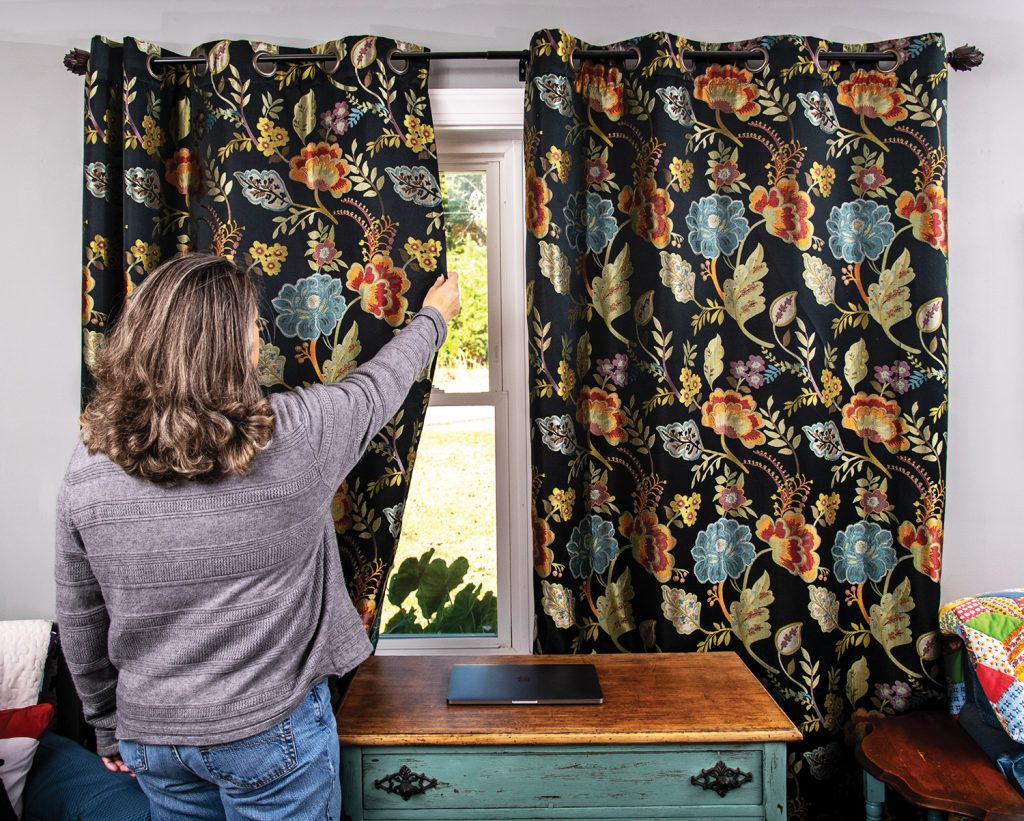What steps can I take this summer to keep my home cool while saving on my energy bills?

Photo COURTESY Mark Gilliland, Pioneer Utility Resources
A hot home and high energy bills can take away from summer fun. Here are 10 tips to prepare your home for high summer temperatures.
Service your AC unit
Air conditioning (AC) units work by moving air over fins or coils that contain refrigerant. When the coils or fins get dirty, the unit doesn’t work as well and uses more energy.
Whether you have a portable unit, central AC or a ductless/mini-split, get your system ready for summer by cleaning the filter, coils and fins. If you are tackling this yourself, always disconnect power to the unit.
Central AC systems have two sets of coils: one inside and one outside. Both should be cleaned annually. If you hire a professional, they can check refrigerant levels during the process.
Seal your window AC unit
If you have a window or portable AC unit that vents through a window, seal the area between the window sashes. Water heater pipe insulation is a great way to seal this spot. It’s available at your local hardware store and is easy to cut for a snug fit.
Thermostat settings
Keeping your thermostat at the highest comfortable temperature will save you money. If you aren’t home during the day, increase your thermostat 8 to 10 degrees. There’s no need to cool an empty house.
Keep your cool
Before heading to the thermostat, turn on a fan in the room you’re in, change into lighter clothing and drink something cool. This may be enough to make you comfortable without spending more to cool your home. Finding the balance between comfort and savings is key.
Lock windows
After opening your windows at night or in the morning to let in fresh air, ensure your windows are closed and locked. This reduces gaps that allow air to flow through and cause drafts. If your locks don’t form a tight fit, add weatherstripping. Most products are easy to install.
Weatherstripping and curtains
Covering and sealing windows may seem like a wintertime efficiency practice, yet these help in the summer, too. Windows are typically the least-insulated surface in a room. Add weatherstripping to form a tight seal and curtains you can close during the hottest times of the day to block out the sun.
Cook al fresco
Keep your home cool or your AC from working overtime by cooking outside. My grill has an extra burner on the side that lets me do stovetop cooking outside, too.
Add insulation
Even in the summer, adding insulation can keep your home more comfortable and save energy used by your air conditioning system. As a general rule, if you can see the joists in the floor of your attic, you need more insulation.
Turn off gas fireplaces
Reducing the amount of heat entering your home can keep it cooler, especially if you don’t have AC. If you have a gas fireplace, your pilot light lets off a small amount of heat into the room. Consider turning it off during summer months.
Add shade outside
Several years ago, we planted a hedge on the south side of our home. I was surprised by how much cooler it made the house in the summertime. Planting trees and shrubs strategically around your home can shade the roof, walls and pavement, reducing heat radiation to your home. According to the U.S. Department of Energy, tree-shaded neighborhoods can be up to 6 degrees cooler in the daytime than treeless areas. Before buying a tree or shrub, check with your city or utility about free tree programs.
Applying a few of these ideas to your home will help keep you comfortable and provide summer energy savings.
Miranda Boutelle is the director of operations and customer engagement at Efficiency Services Group in Oregon, a cooperatively owned energy efficiency company. She also writes on energy efficiency topics for the National Rural Electric Cooperative Association, the national trade association representing more than 900 local electric cooperatives. From growing suburbs to remote farming communities, electric co-ops serve as engines of economic development for 42 million Americans across 56% of the nation’s landscape.





